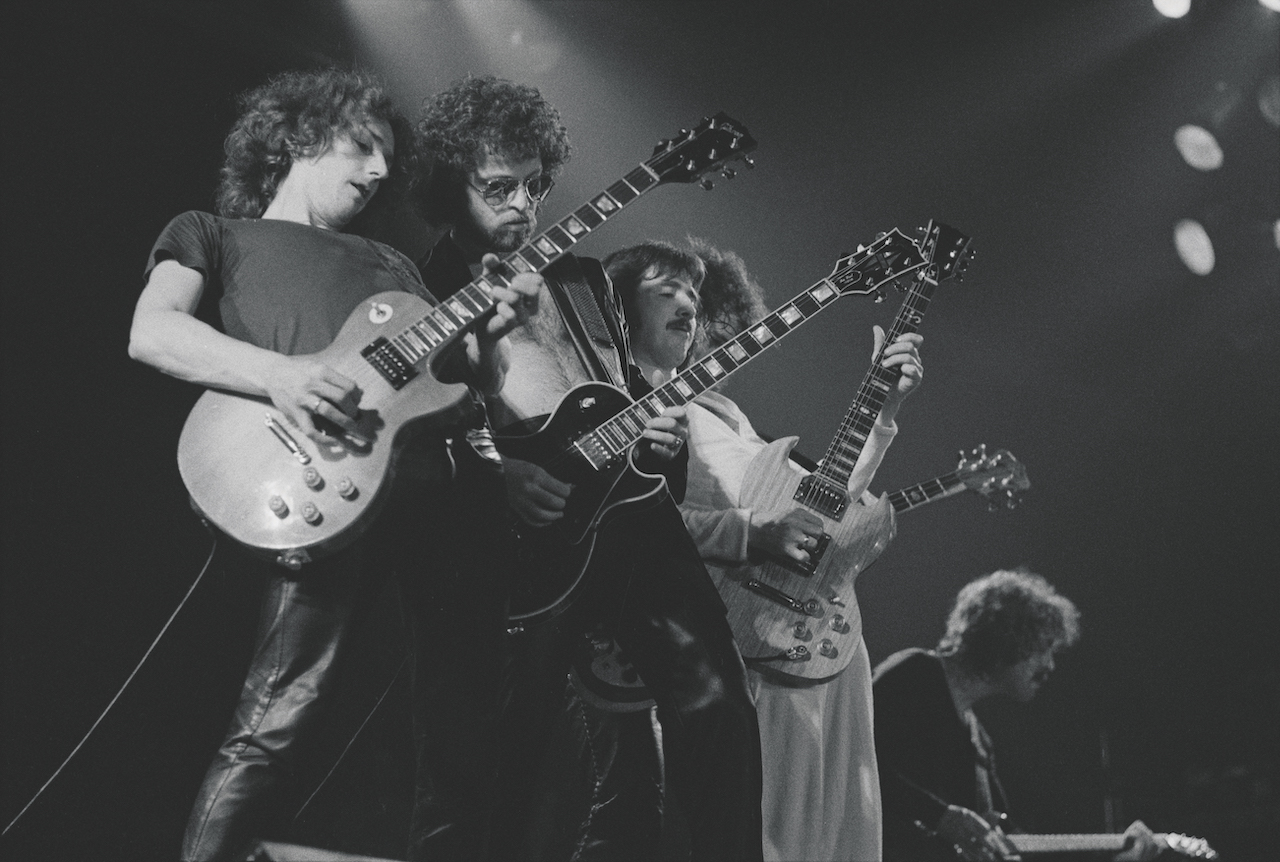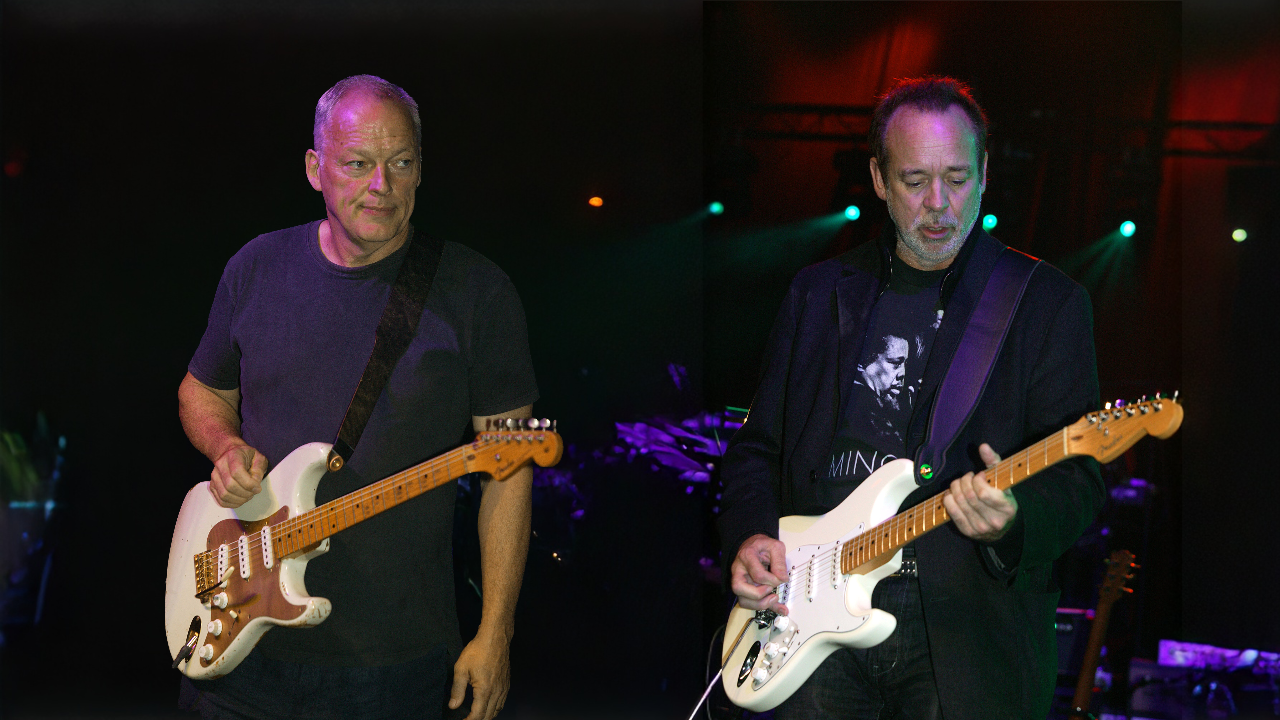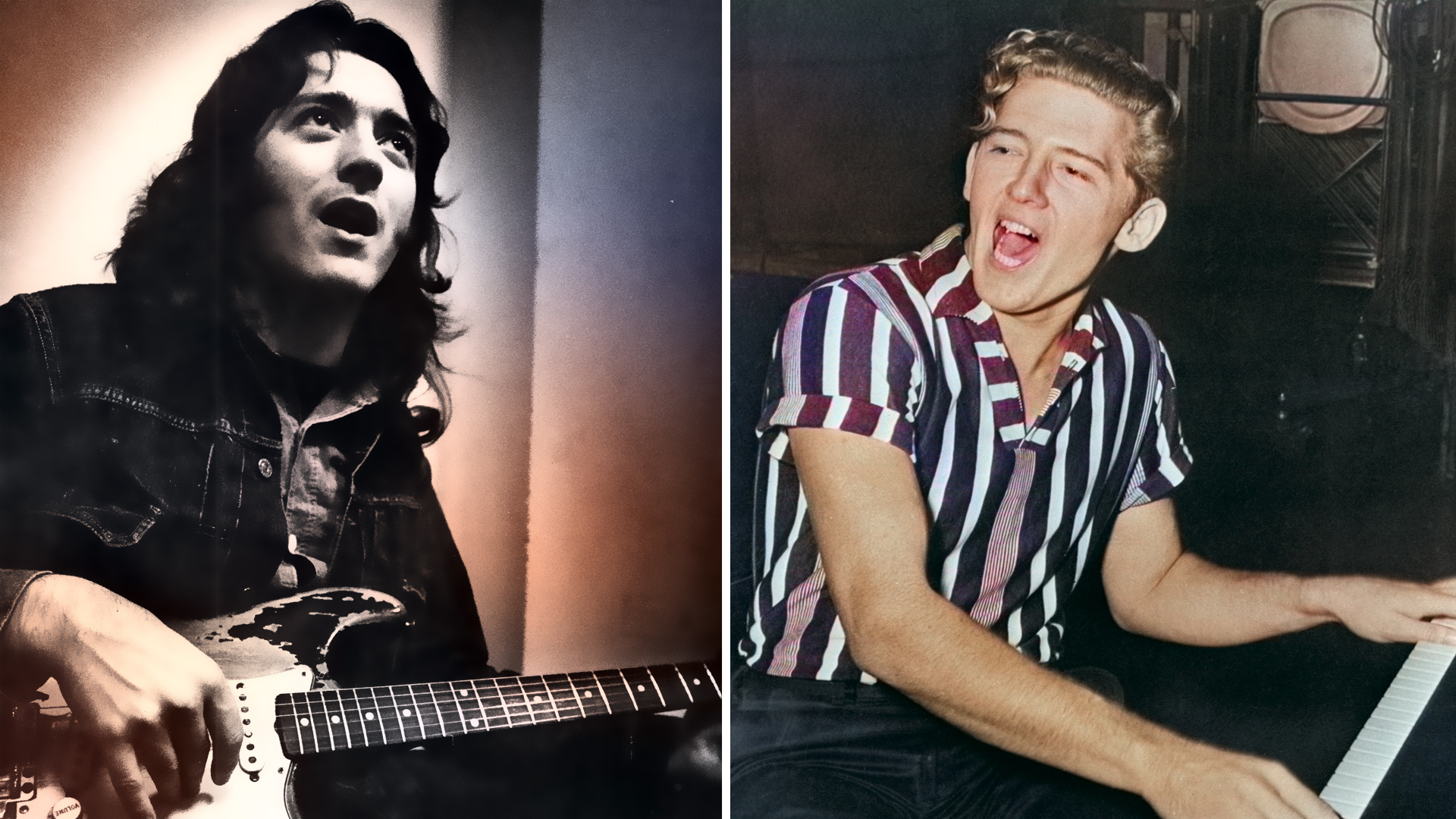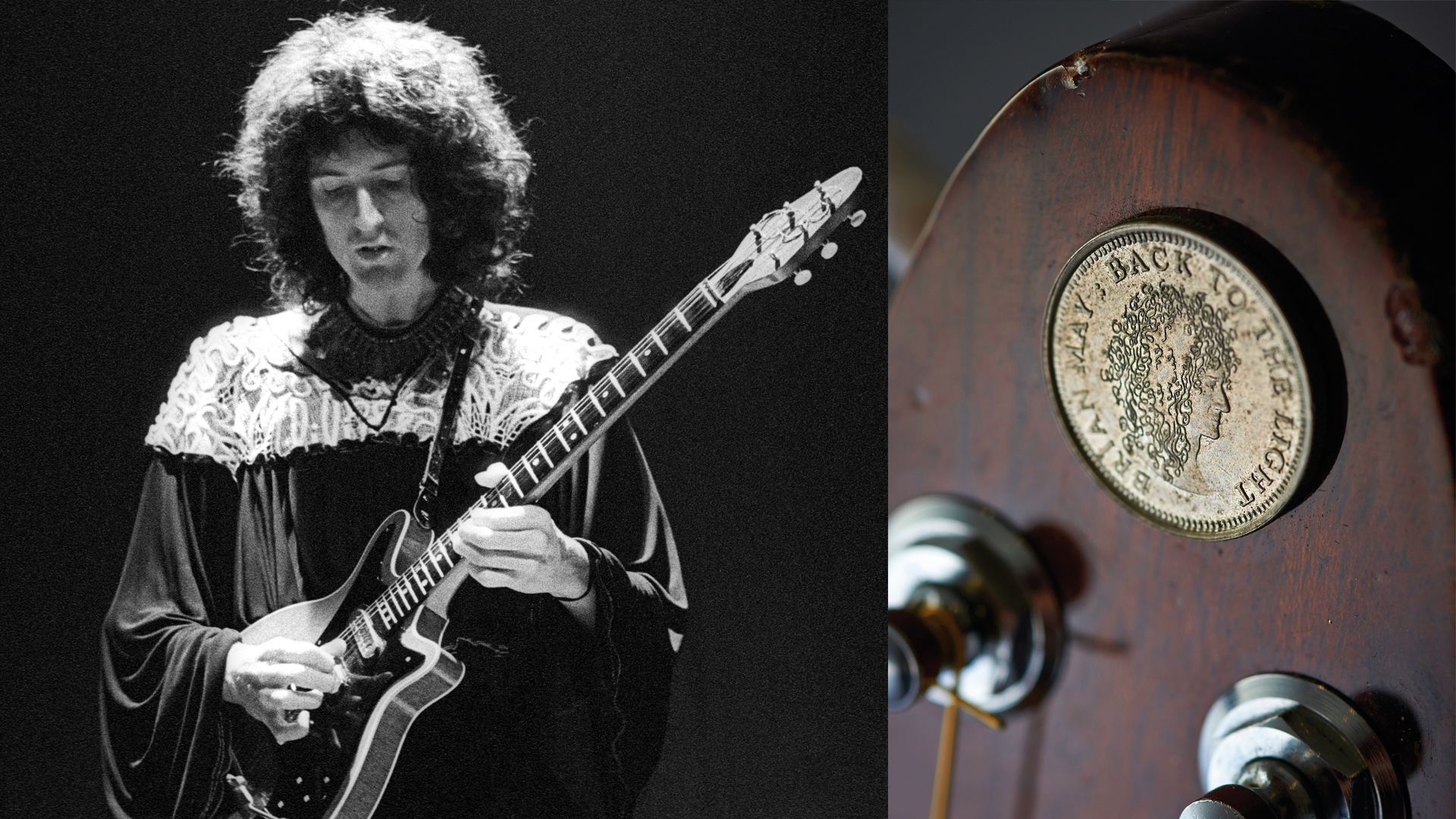“The cowbell was an afterthought. Before the Saturday Night Live skit, we never used the cowbell live. We had to start using it after the skit came out”: Blue Öyster Cult's Buck Dharma on the stories behind (Don’t Fear) The Reaper, and other BÖC classics
Less cowbell, more songs – the Blue Öyster Cult guitarist goes deep on the writing and recording of some of the band's greatest tunes

Guitar was a “third time’s the charm” proposition for Blue Öyster Cult co-founder Donald “Buck Dharma” Roeser. The Queens, New York, native started out playing accordion when he was nine years old before switching to drums a year later “when I realized the accordion wasn’t hip,” he says. That lasted for a few years until he broke his wrist playing basketball.
“When I got my cast on,” Roeser recalls, “my brother had gotten a Stella acoustic guitar for Christmas, and I started playing that. I was a junior in high school and knew a drummer who was better than me, so I started playing lead guitar, teaching myself by ear. I never looked back.”
For 57 years – since Blue Öyster Cult’s origins as Soft White Underbelly in 1967 – Roeser has played lead guitar for BÖC and served as one of its chief songwriters and occasional lead vocalist. He laughs as he describes the band’s longevity – “unexpected” is his word of choice – but the band has a body of 14 studio albums and a clutch of songs that remain classic-rock standards. BÖC also earned some pop-culture fame when they were immortalized in Saturday Night Live’s “More Cowbell” sketch in 2000.
“What we’ve had to offer throughout the ride was the point of view of the participants,” Roeser says.
That includes the five original members – Roeser, co-guitarist Eric Bloom, keyboardist Allen Lanier, bassist Joe Bouchard and his brother, drummer Albert – as well as producer Sandy Pearlman and Richard Meltzer, both of whom served as the group’s main lyricists. “So what you got was an amalgam of that mixture,” he continues, “and over the years we’ve always pretty much just been ourselves. ’Cause any time we were conscious of fashion or trends, I think it was to our detriment. We’ve always done best just doing what we do.”

That encompasses a wide range of styles. Over a nearly six-decade career, Blue Öyster Cult have blended clever intellectualism with sophisticated humor, shredding as a multi-guitar monster (late co-founder Lanier also played rhythm and lead) while maintaining a strong melodic discipline.
The group could rock out with Cities on Flame With Rock and Roll or Hot Rails to Hell, then deliver the sweet sentimentality of Burnin’ for You or the buoyant pop of Goin’ Through the Motions, a 1977 single co-written with Ian Hunter.
Patti Smith, Lanier’s onetime girlfriend, even brought some cutting-edge poetic cachet with her contributions to songs such as Career of Evil and The Revenge of Vera Gemini.
“We had a few band houses where we’d practice, and we worked hard at it,” Roeser says. “We spent a lot of time doing it, because we had our eyes on the ball.”
Roeser and Bloom are back on the road this year with the latest incarnation of BOC, while the former has been working on a new solo track called The End of Every Song that he plans to release this year. There’s “new” BÖC material as well in the form of Ghost Stories, a 12-track set drawn from vintage archival recordings, mostly by the original lineup, kept by the band’s longtime live sound engineer, George Geranios.
Current band member Richie Castellano (keyboard, guitars, and vocals) and producer Steve Schenck deployed a variety of technologies to make them release-worthy, while Albert and Joe Bouchard recorded new parts on some tracks. Among the highlights are BÖC’s only known recorded performance of the MC5’s Kick Out the Jams and a 2016 cover of the Beatles’ If I Fell.
“It sounds like a long-lost BOC record,” Roeser contends. “It’s almost eerie to me to hear the Bouchard brothers back in the band and Allen Lanier still alive. Of course I remember the songs from the day, but they sound like new tracks to me.”
And as long as he’s looking back at those Ghost Stories, we thought it was a good time for Roeser to dig into some of the more celebrated memories from Blue Öyster Cult’s past.
1. Cities on Flame with Rock and Roll – Blue Öyster Cult (1972)
“Cities on Flame is a Sandy Pearlman lyric. Albert Bouchard began the writing process; he was heavily, heavily influenced by Black Sabbath’s The Wizard and turned that phrase around and made it dip the other way. And I wrote the second part of that riff, so that’s how we did that. The chorus and the rest of the arrangement we would just hash out and play until we were all happy with the way it sounded.
“In the beginning, we would get a type-written – or handwritten, in Sandy’s case – lyric sheet, and often, when we would write the music to it, we would edit down the original text. It was usually more verbose than it wound up being on the record. But if I thought the lyric was good and important, I always prefer to write music that works with the original lyrics.
“My lead style at that point was heavily influenced by Danny Kalb of the Blues Project. I was in a band in college with Albert and we covered a lot of Blues Project songs, and to do that I had to woodshed Danny Kalb’s leads – that kind of fast, pentatonic stuff. I’ve carried that through my entire life.”
2. Astronomy – Secret Treaties (1974)
“We all really respected and liked this song and enjoyed playing it. It became a big show-piece in the live set: Eric had a bracelet that would shoot a laser beam at the mirror ball in the center of the arena. It was just a transcendent moment.
“There was a big guitar solo for me in there, and it transported people in the audience to another place in the way a lot of other songs didn’t. We had a couple of other songs that did a similar thing: Veteran of the Psychic Wars and Last Days of May. They were showpieces that did that, too.
“That’s Sandy Pearlman’s lyric, of course. It was part of his Imaginos song cycle. [Pearlman’s sci-fi concept told the story of alien powers driving humankind to an apocalyptic battle with evil.]
“At various times he wanted us to record the entire Imaginos, which we always resisted. We would do pieces of it, as when we recorded Astronomy, but to do the whole thing wouldn’t leave room for anybody else to write. Had he lived long enough, maybe we would’ve taken it on. But instead, Albert did it after he left Blue Öyster Cult, in 1981.
“He spent a lot of effort on it, but Columbia didn’t like it. [The label rejected the album in 1984.] Afterward, Eric and I agreed to contribute to it and give Sandy some BÖC album money. [Imaginos was released in 1988 as the group’s last recording with their original label, CBS.] Unfortunately, it didn’t really reach a wide audience at all. Actually, we’ve just started playing Astronomy live again. It’s nice to have it back in the rotation, and it’s still a great song to play live.”
3. (Don’t Fear) The Reaper – Agents of Fortune (1976)
“We wrote (Don’t Fear) The Reaper at the point where we all had quarter-inch tape recorders. In the beginning, the band had one stereo tape recorder; we would record our rehearsal passes and then listen back and figure out if we liked it or not and how to deal with it. When Teac came out with the 3340 four-channel tape machine, we all had our own homes, and we would write and bring in more fully realized arrangements. And the first song I wrote with my recorder was (Don’t Fear) The Reaper.
“The guitar riff that opens the song just came out of my head when I sat down and played my guitar. I realized I had something nifty, so I recorded it and messed around with that. The first couple lines of lyrics basically were stream of conscious, and the story emerged from that.
“It came from me being diagnosed with a heart arrhythmia, which I’ve had my whole life, so it’s not a big deal; I take medication for it. But at the time I was thinking of being mortal and just the idea of dying early and leaving your loved ones behind, and then sort of getting back together again, imagining there’s some life after death.

“It took about six weeks to finish the story, arrange the song and create the middle section. But the demo I brought the band was pretty much the way the song was recorded. The cowbell [laughs] was an afterthought. The funny thing is, before the Saturday Night Live skit, the band never played the cowbell live. We had to start playing it after the skit came out and became so popular.
“BÖC were never a singles band. We were lucky to have a few that did well, starting with Reaper. I thought, This song’s gonna get some FM play, but I didn’t think it was gonna be big. So it surprised me. It surprised all of us, I think.”
4. Godzilla – Spectres (1977)
“I wrote this on guitar in a hotel room in Dallas. It was probably my SG that was originally Cherry and repainted white. I played it through a Pignose amp. I didn’t often write stuff that was consciously heavy; I generally write for my own voice, so I go for the more melodic stuff. But in the case of Godzilla, it just happened that way.
“I was into the movie, of course – the first one [from 1954]. I wrote the lyrics in one piece and thought, ‘Okay, I’m gonna write more,’ but then I couldn’t. So it’s basically a chorus and two verses. That’s all there is to that song. But while there’s not much to it, it puts the point across.”
5. Burnin’ For You – Fire of Unknown Origin (1981)
“This is a Richard Meltzer lyric, and I would say it’s arguably him at his most sentimental. He wrote that and I demoed it. I was going to put it on my solo record [1982’s Flat Out], but Sandy convinced me to give it to the band. It probably found a wider audience with Blue Öyster Cult than it would have on my solo record.
“I used my multitrack recorder to do the first part, then I played the harmony to it, and then I did the intro. In those days, it seemed like every song had a strong opening like that, be it (Don’t Fear) The Reaper or Burnin’ for You, or Godzilla, even. They’re all guitar-driven, as was the fashion in that period of time. It just worked.
“I probably wrote it at home on one of my guitars, a Gibson or another. I had a Stratocaster by that point, but I generally favored Gibson guitars, just for their playability and humbucking pickups. When I recorded it, I used a Vulcan, which was a limited-production guitar made by Giuliano Balestra, a luthier in White Plains, New York.”
Get The Pick Newsletter
All the latest guitar news, interviews, lessons, reviews, deals and more, direct to your inbox!
Gary Graff is an award-winning Detroit-based music journalist and author who writes for a variety of print, online and broadcast outlets. He has written and collaborated on books about Alice Cooper, Neil Young, Bob Seger, Bruce Springsteen and Rock 'n' Roll Myths. He's also the founding editor of the award-winning MusicHound Essential Album Guide series and of the new 501 Essential Albums series. Graff is also a co-founder and co-producer of the annual Detroit Music Awards.
"I thought, 'Jeez, how the hell did he do that?'" Phil Manzanera on the tone, tuning and technique of his teenage friend David Gilmour
“I felt so crestfallen. I wanted to throw my guitar away.” Alex Lifeson on the gig that made Rush feel like they’d made it — and how one audience member brought them crashing down to Earth
















